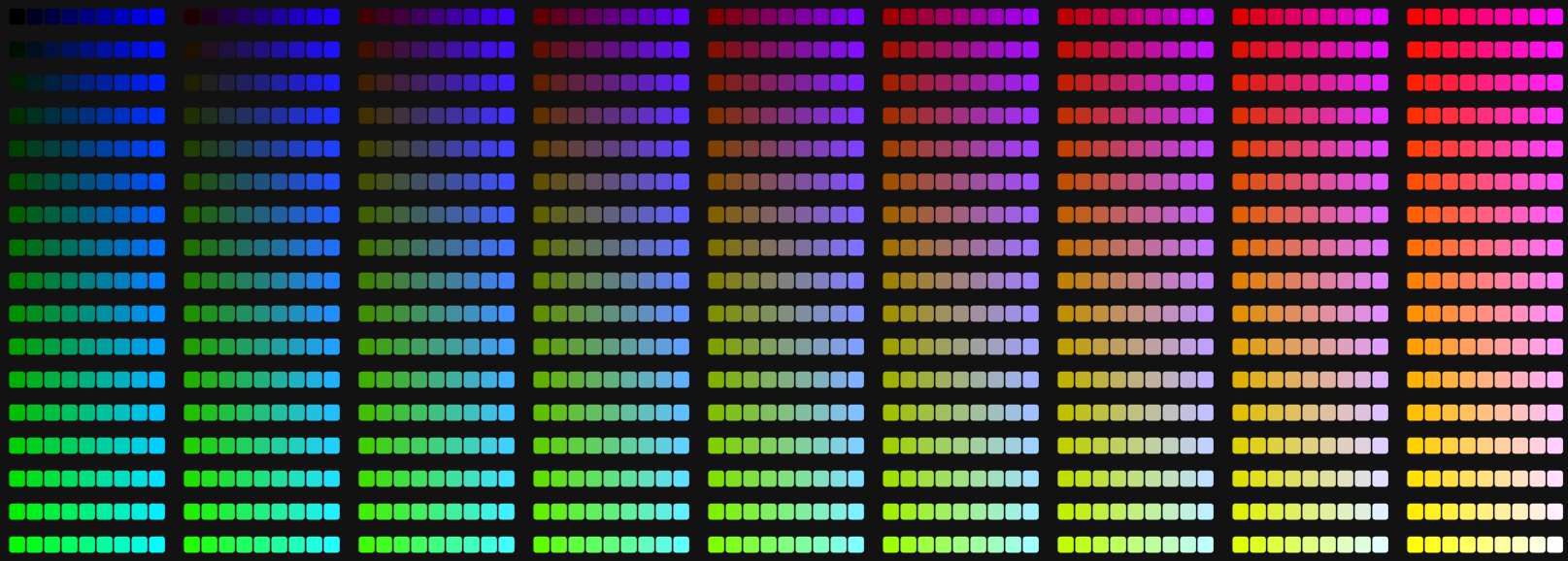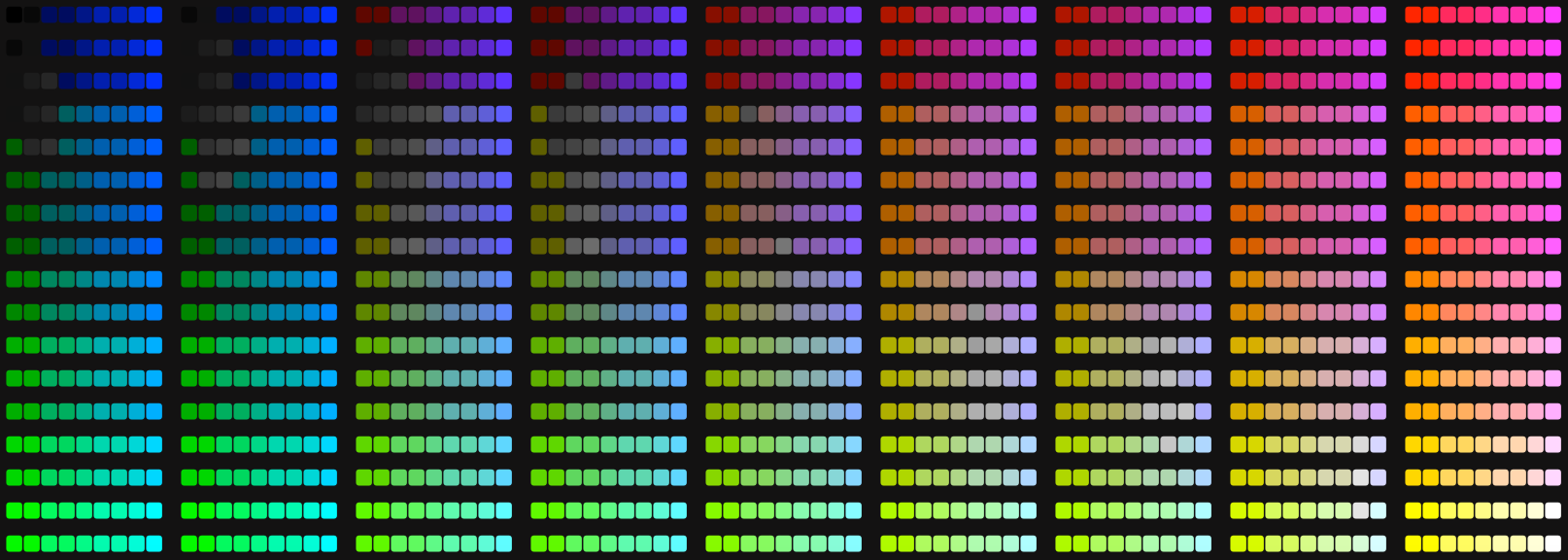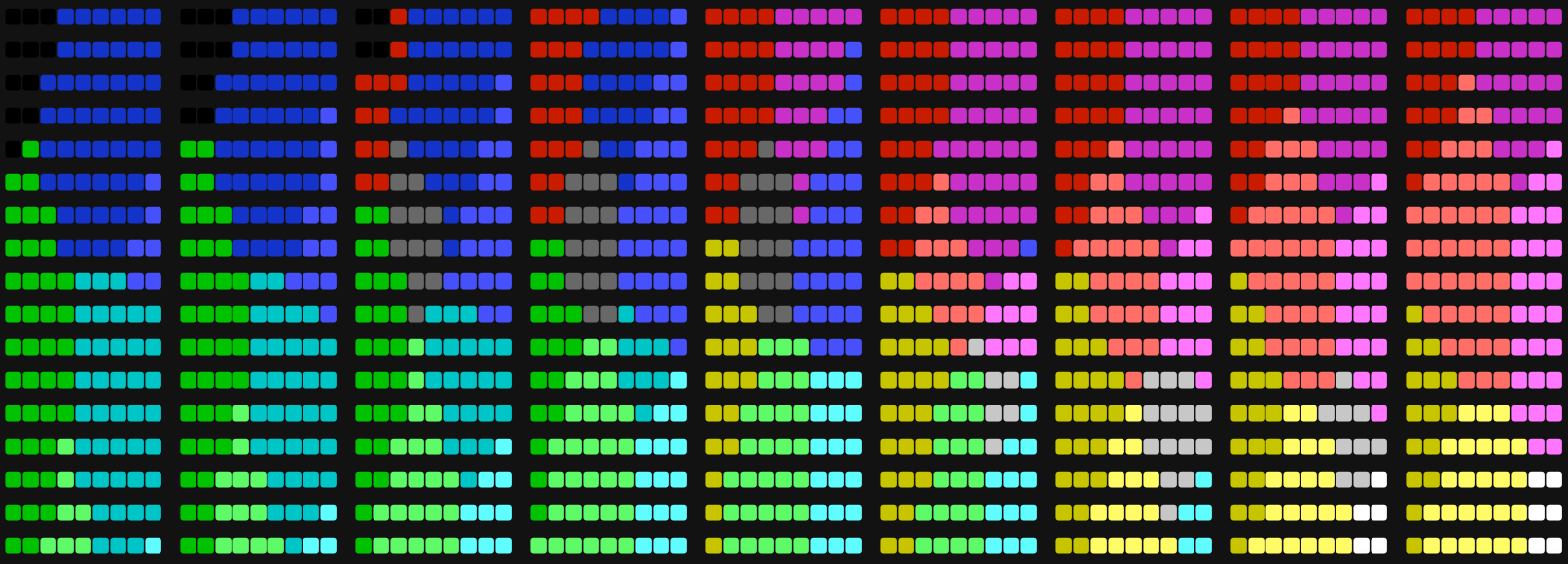
Isocline: a portable readline alternative.
Isocline is a pure C library that can be used as an alternative to the GNU readline library (latest release v1.0.9, 2022-01-15).
-
Small: less than 8k lines and can be compiled as a single C file without any dependencies or configuration (e.g.
gcc -c src/isocline.c). -
Portable: works on Unix, Windows, and macOS, and uses a minimal subset of ANSI escape sequences.
-
Features: extensive multi-line editing mode (
shift-tab), (24-bit) color, history, completion, unicode, undo/redo, incremental history search, inline hints, syntax highlighting, brace matching, closing brace insertion, auto indentation, graceful fallback, support for custom allocators, etc. -
License: MIT.
-
Comes with a Haskell binding (
System.Console.Isocline.
Enjoy, Daan
Demo
Shows in order: unicode, syntax highlighting, brace matching, jump to matching brace, auto indent, multiline editing, 24-bit colors, inline hinting, filename completion, and incremental history search.
(screen capture was made with termtosvg by Nicolas Bedos)
Usage
Include the isocline header in your C or C++ source:
#include <include/isocline.h>
and call ic_readline to get user input with rich editing abilities:
char* input;
while( (input = ic_readline("prompt")) != NULL ) { // ctrl+d/c or errors return NULL
printf("you typed:\n%s\n", input); // use the input
free(input);
}
See the example for a full example with completion, syntax highligting, history, etc.
Run the Example
You can compile and run the example as:
$ gcc -o example -Iinclude test/example.c src/isocline.c
$ ./example
or, the Haskell example:
$ ghc -ihaskell test/Example.hs src/isocline.c
$ ./test/Example
Editing with Isocline
Isocline tries to be as compatible as possible with standard GNU Readline key bindings.
Overview:
home/ctrl-a cursor end/ctrl-e
┌─────────────────┼───────────────┐ (navigate)
│ ctrl-left │ ctrl-right │
│ ┌───────┼──────┐ │ ctrl-r : search history
▼ ▼ ▼ ▼ ▼ tab : complete word
prompt> it is the quintessential language shift-tab: insert new line
▲ ▲ ▲ ▲ esc : delete input, done
│ └──────────────┘ │ ctrl-z : undo
│ alt-backsp alt-d │
└─────────────────────────────────┘ (delete)
ctrl-u ctrl-k
Note: on macOS, the meta (alt) key is not directly available in most terminals.
Terminal/iTerm2 users can activate the meta key through
Terminal → Preferences → Settings → Use option as meta key.
Key Bindings
These are also shown when pressing F1 on a Isocline prompt. We use ^ as a shorthand for ctrl-:
| Navigation | |
|---|---|
left,^b |
go one character to the left |
right,^f |
go one character to the right |
up |
go one row up, or back in the history |
down |
go one row down, or forward in the history |
^left |
go to the start of the previous word |
^right |
go to the end the current word |
home,^a |
go to the start of the current line |
end,^e |
go to the end of the current line |
pgup,^home |
go to the start of the current input |
pgdn,^end |
go to the end of the current input |
alt-m |
jump to matching brace |
^p |
go back in the history |
^n |
go forward in the history |
^r,^s |
search the history starting with the current word |
| Deletion | |
|---|---|
del,^d |
delete the current character |
backsp,^h |
delete the previous character |
^w |
delete to preceding white space |
alt-backsp |
delete to the start of the current word |
alt-d |
delete to the end of the current word |
^u |
delete to the start of the current line |
^k |
delete to the end of the current line |
esc |
delete the current input, or done with empty input |
| Editing | |
|---|---|
enter |
accept current input |
^enter,^j,shift-tab |
create a new line for multi-line input |
^l |
clear screen |
^t |
swap with previous character (move character backward) |
^z,^_ |
undo |
^y |
redo |
tab |
try to complete the current input |
| Completion menu | |
|---|---|
enter,left |
use the currently selected completion |
1 - 9 |
use completion N from the menu |
tab, down |
select the next completion |
shift-tab, up |
select the previous completion |
esc |
exit menu without completing |
pgdn,^enter,^j |
show all further possible completions |
| Incremental history search | |
|---|---|
enter |
use the currently found history entry |
backsp,^z |
go back to the previous match (undo) |
tab,^r,up |
find the next match |
shift-tab,^s,down |
find an earlier match |
esc |
exit search |
Build the Library
Build as a Single Source
Copy the sources (in include and src) into your project, or add the library as a submodule:
$ git submodule add https://github.com/daanx/isocline
and add isocline/src/isocline.c to your build rules -- no configuration is needed.
Build with CMake
Clone the repository and run cmake to build a static library (.a/.lib):
$ git clone https://github.com/daanx/isocline
$ cd isocline
$ mkdir -p build/release
$ cd build/release
$ cmake ../..
$ cmake --build .
This builds a static library libisocline.a (or isocline.lib on Windows)
and the example program:
$ ./example
Build the Haskell Library
See the Haskell readme for instructions to build and use the Haskell library.
API Reference
-
See the C API reference and the example for example usage of history, completion, etc.
-
See the Haskell API reference on Hackage and the Haskell example.
Motivation
Isocline was created for use in the Koka interactive compiler. This required: pure C (no dependency on a C++ runtime or other libraries), portable (across Linux, macOS, and Windows), unicode support, a BSD-style license, and good functionality for completion and multi-line editing.
Some other excellent libraries that we considered: GNU readline, editline, linenoise, replxx, and Haskeline.
Formatted Output
Isocline also exposes functions for rich terminal output
as ic_print (and ic_println and ic_printf).
Inspired by the (Python) Rich library,
this supports a form of bbcode's to format the output:
ic_println( "[b]bold [red]and red[/red][/b]" );
Each print automatically closes any open tags that were
not yet closed. Also, you can use a general close
tag as [/] to close the innermost tag, so the
following print is equivalent to the earlier one:
ic_println( "[b]bold [red]and red[/]" );
There can be multiple styles in one tag (where the first name is used for the closing tag):
ic_println( "[u #FFD700]underlined gold[/]" );
Sometimes, you need to display arbitrary messages
that may contain sequences that you would not like
to be interpreted as bbcode tags. One way to do
this is the [!tag] which ignores formatting
up to a close tag of the form [/tag].
ic_printf( "[red]red? [!pre]%s[/pre].\n", "[blue]not blue!" );
Predefined styles include b (bold),
u (underline), i (italic), and r (reverse video), but
you can (re)define any style yourself as:
ic_style_def("warning", "crimson u");
and use them like any builtin style or property:
ic_println( "[warning]this is a warning![/]" );
which is great for adding themes to your application.
Each ic_print function always closes any unclosed tags automatically.
To open a style persistently, use ic_style_open with a matching
ic_style_close which scopes over any ic_print statements in between.
ic_style_open("warning");
ic_println("[b]crimson underlined and bold[/]");
ic_style_close();
Advanced
BBCode Format
An open tag can have multiple white space separated
entries that are
either a style name, or a primitive property[=value].
Styles
Isocline provides the following builtin styles as property shorthands:
b (bold), u (underline), i (italic), r (reverse video),
and some builtin styles for syntax highlighting:
keyword, control (control-flow keywords), string,
comment, number, type, constant.
Predefined styles used by Isocline itself are:
ic-prompt: prompt style, e.g.ic_style_def("ic-prompt", "yellow on blue").ic-info: information (like the numbers in a completion menu).ic-diminish: dim text (used for example in history search).ic-emphasis: emphasized text (also used in history search).ic-hint: color of an inline hint.ic-error: error color (like an unmatched brace).ic-bracematch: color of matching parenthesis.
Properties
Boolean properties are by default on:
bold[=(on|off)]italic[=(on|off)]underline[=(on|off)]reverse[=(on|off)]
Color properties can be assigned a color:
color=colorbgcolor=color- color: equivalent to
color=color. oncolor: equivalent tobgcolor=color.
A color value can be specified in many ways:
- any standard HTML color name.
- any of the 16 standard ANSI color names by prefixing
ansi-(likeansi-blackoransi-maroon).
The actual color value of these depend on the a terminal theme. #rrggbb or#rgb for a specific 24-bit color.ansi-color=idx oransi-bgcolor=idx, where idx specifies an entry in the standard ANSI 256 color palette (between 0 and 255). Use idx 256 for the ANSI default color.
The width property makes the text at least width long:
width=width [;align [;fill] ]
where width is the column with, align is left, center, or right,
and fill the fill character (' ').
The maxwidth property makes text at most width long; when the content
it is wider, the left- or right side (depending on the alignment)
will have three dots (...) to visualize that content is cut off.
maxwidth=width [;align]
Environment Variables
NO_COLOR: if present no colors are displayed.CLICOLOR=1: if set, theLSCOLORSorLS_COLORSenvironment variables are used to colorize filename completions.COLORTERM=(truecolor|256color|16color|8color|monochrome): enable a certain color palette, see the next section.TERM: used on some systems to determine the color
Colors
Isocline supports 24-bit colors and any RGB colors are automatically
mapped to a reduced palette on older terminals if these do not
support true color. Detection of full color support
is not always possible to do automatically and you can
set the COLORTERM environment variable expicitly to force Isocline to use
a specific palette:
COLORTERM=truecolor: use 24-bit colors.

COLORTERM=256color: use the ANSI 256 color palette.

COLORTERM=16color: use the regular ANSI 16 color palette (8 normal and 8 bright colors).

COLORTERM=8color: use bold for bright colors.COLORTERM=monochrome: use no color.
The above screenshots are made with the
test_colors.c program. You can test your own
terminal as:
$ gcc -o test_colors -Iinclude test/test_colors.c src/isocline.c
$ ./test_colors
$ COLORTERM=truecolor ./test_colors
$ COLORTERM=16color ./test_colors
ANSI Escape Sequences
Isocline uses just few ANSI escape sequences that are widely supported:
ESC[nA,ESC[nB,ESC[nC, andESC[nD, for moving the cursor n places up, down, right, and left.ESC[Kto clear the line from the cursor.ESC[nmfor colors, with n one of: 0 (reset), 1,22 (bold), 3,23 (italic), 4,24 (underline), 7,27 (reverse), 30-37,40-47,90-97,100-107 (color), and 39,49 (select default color).ESC[38;5;nm,ESC[48;5;nm,ESC[38;2;r;g;bm,ESC[48;2;r;g;bm: on terminals that support it, select entry n from the 256 color ANSI palette (used withXTERM=xterm-256colorfor example), or directly specify any 24-bit rgb color (used withCOLORTERM=truecolor) for the foreground or background.
On Windows the above functionality is implemented using the Windows console API (except if running in the new Windows Terminal which supports these escape sequences natively).
Async and Threads
Isocline is not thread-safe and ic_readlinexxx and ic_printxxx should
be used from one thread only.
The best way to use ic_readline asynchronously is
to run it in a (blocking) dedicated thread and deliver
results from there to the async event loop. Isocline has the
bool ic_async_stop(void)
function that is thread-safe and can deliver an
asynchronous event to Isocline that unblocks a current
ic_readline and makes it behave as if the user pressed
ctrl-c (which returns NULL from the read line call).
Color Mapping
To map full RGB colors to an ANSI 256 or 16-color palette Isocline finds a palette color with the minimal "color distance" to the original color. There are various ways of calculating this: one way is to take the euclidean distance in the sRGB space (simple-rgb), a slightly better way is to take a weighted distance where the weight distribution is adjusted according to how big the red component is (redmean, denoted as delta-rgb in the figure), this is used by Isocline), and finally, we can first translate into a perceptually uniform color space (CIElab) and calculate the distance there using the CIEDE2000 algorithm (ciede2000). Here are these three methods compared on some colors:
Each top row is the true 24-bit RGB color. Surprisingly, the sophisticated CIEDE2000 distance seems less good here compared to the simpler methods (as in the upper left block for example) (perhaps because this algorithm was created to find close perceptual colors in images where lightness differences may be given less weight?). CIEDE2000 also leads to more "outliers", for example as seen in column 5. Given these results, Isocline uses redmean for color mapping. We also add a gray correction that makes it less likely to substitute a color for a gray value (and the other way around).
Possible Future Extensions
- Vi key bindings.
- kill buffer.
- make the
ic_printxxx functions thread-safe. - extended low-level terminal functions.
- status and progress bars.
- prompt variants: confirm, etc.
- ...
Contact me if you are interested in doing any of these :-)
Releases
2022-01-15: v1.0.9: fix missingic_completion_arg(issue #6), fix null ptr check in ic_print (issue #7), fix crash when using /dev/null as both input and output.2021-09-05: v1.0.5: use our own wcwidth for consistency; thanks to Hans-Georg Breunig for helping with testing on NetBSD.2021-08-28: v1.0.4: fix color query on Ubuntu/Gnome2021-08-27: v1.0.3: fix duplicates in completions2021-08-23: v1.0.2: fix windows eol wrapping2021-08-21: v1.0.1: fix line-buffering2021-08-20: v1.0.0: initial release

